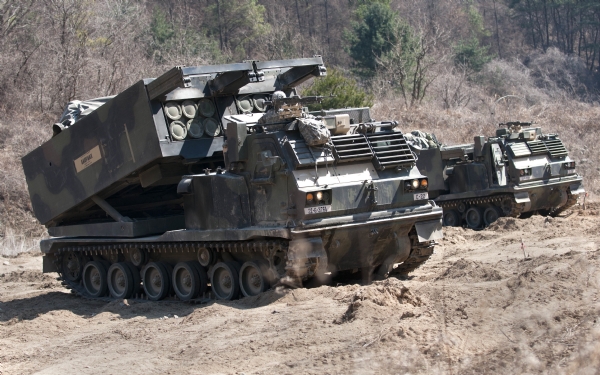What are MLRS artillery rockets sent to Ukraine?
Here’s how the system works, and what it could potentially do, as the war stretches into a fourth month. An artillery rocket is a weapon that is typically propelled by a solid-fuel motor and can carry a variety of warheads. During the Cold War, most artillery rockets were unguided and imprecise when fired at greater distances.
Total Views |
Kyiv, Jun 2: As the fighting in eastern Ukraine turns into an artillery duel, the Pentagon announced that it would send its most advanced artillery rocket launcher and munitions to the Ukrainian military in the hope of giving it an edge over Russia.

Here’s how the system works, and what it could potentially do, as the war stretches into a fourth month. An artillery rocket is a weapon that is typically propelled by a solid-fuel motor and can carry a variety of warheads. During the Cold War, most artillery rockets were unguided and imprecise when fired at greater distances.
An artillery rocket is a weapon that is typically propelled by a solid-fuel motor and can carry a variety of warheads. During the Cold War, most artillery rockets were unguided and imprecise when fired at greater distances. Yes. During Operation Desert Storm, government records show that the U.S. Army fired more than 17,200 unguided MLRS rockets and 32 of the larger ATACMS guided missiles at Iraqi forces. The sub munitions carried by those rockets had a high failure rate, and the duds left behind killed and wounded many U.S. troops. In 2005, the Army fired a new guided rocket, known as a GMLRS, in combat in Iraq for the first time. That rocket has a range of more than 40 miles, more than twice that of the older rockets, and its navigation is aided by GPS signals.
Also Read: Israeli Defence Minister visits India
Since the invasion, the Pentagon has provided Ukraine with 108 M777 howitzers, the most lethal weapons the West has delivered so far. But the range of the GMLRS is more than twice that of the 155 mm shells fired by howitzers. The Pentagon has spent approximately $5.4 billion to buy more than 42,000 of the GMLRS since 1998, according to a report published by the Congressional Research Service last year, and commanders in Iraq and Afghanistan used them frequently.


